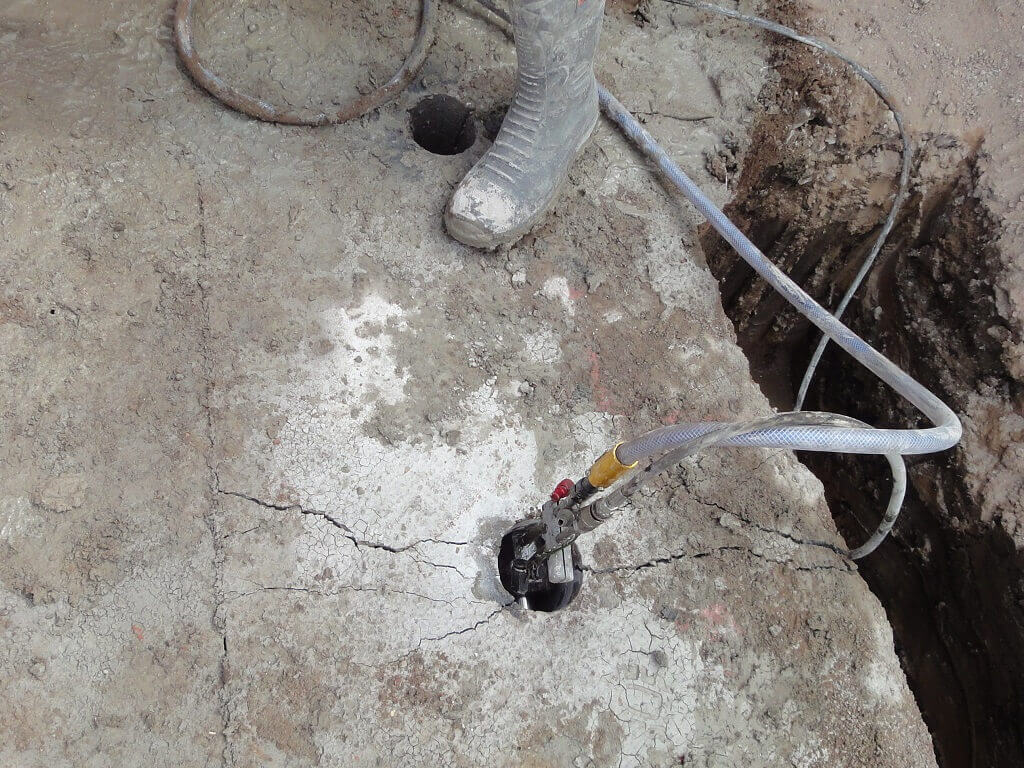CONCRETE BURSTING AND SPLITTING
What is Bursting?
Concrete bursting involves a hydraulic motor, which powers a burster head or ram. Holes are drilled into the concrete in the area that needs to be removed. These holes range in size from 115mm to 200mm in diameter.
Once these holes are drilled, the burster head is placed within the hole. The hydraulic motor moves the pistons within the head, which cause it to expand. This process breaks the concrete into smaller, manageable pieces and is repeated in every drilled hole until the entire area that needs to be removed is broken up and cleared.
What is Splitting?
Concrete splitting is closely related to concrete bursting. A powerful hydraulic wedge and two counter wedges are inserted into pre-drilled holes. These wedges are then expanded and driven forward, which force the counter wedges apart. When this method is used, the concrete will split apart within seconds into smaller pieces, which then can be removed more easily.
Why use Bursting or Splitting?
Bursting and splitting present a multitude of benefits. The process is virtually silent – as opposed to the noisy percussive demolition equipment – and produces no intense vibration or any flying debris and dust, which can be very dangerous to the people and property surrounding.
With up to 80 tonnes of pressure, these methods are incredibly effective and provide a powerful means to eradicate deep concrete masses. But even with all of the power behind bursting and splitting, they are also very precise and easily controlled for those who are trained in their use.
Another benefit these processes give is the ability to work around office blocks, shopping centres, residential areas, hospitals and anywhere else that needs a quiet and vibration-free environment. The machinery is also able to perform their work in close quarters or in places with confined or hard to access areas.

